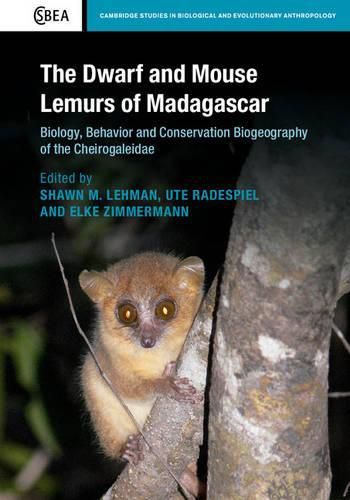Readings Newsletter
Become a Readings Member to make your shopping experience even easier.
Sign in or sign up for free!
You’re not far away from qualifying for FREE standard shipping within Australia
You’ve qualified for FREE standard shipping within Australia
The cart is loading…






The dwarf and mouse lemurs of Madagascar are two very species-rich lemur genera, yet there is a relative paucity of information on this primate family in published literature. In this first ever treatment of the Cheirogaleidae, international experts are brought together to review and integrate our current knowledge of the behaviour, physiology, ecology, genetics and biogeography of these species. A wide range of direct and indirect research methods that are currently used to study these cryptic nocturnal solitary foragers are described. By uniting often disparate research on captive and free-ranging taxa and synthesising recent methodological advances, this book provides new insights that will encourage further studies of this fascinating primate family. This synthesis will provide an incentive for more integrative studies of the Cheirogaleidae in captivity and in the wild, enabling the impacts of deforestation and other factors to be identified and directions for future conservation efforts to be established.
$9.00 standard shipping within Australia
FREE standard shipping within Australia for orders over $100.00
Express & International shipping calculated at checkout
The dwarf and mouse lemurs of Madagascar are two very species-rich lemur genera, yet there is a relative paucity of information on this primate family in published literature. In this first ever treatment of the Cheirogaleidae, international experts are brought together to review and integrate our current knowledge of the behaviour, physiology, ecology, genetics and biogeography of these species. A wide range of direct and indirect research methods that are currently used to study these cryptic nocturnal solitary foragers are described. By uniting often disparate research on captive and free-ranging taxa and synthesising recent methodological advances, this book provides new insights that will encourage further studies of this fascinating primate family. This synthesis will provide an incentive for more integrative studies of the Cheirogaleidae in captivity and in the wild, enabling the impacts of deforestation and other factors to be identified and directions for future conservation efforts to be established.